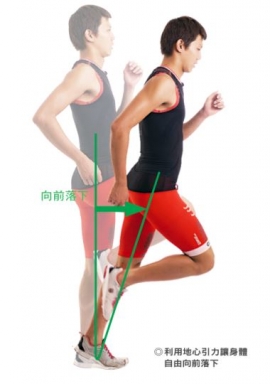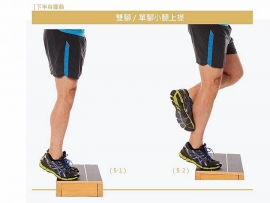Kelly Starrett在诊断患者或是运动员,会依序的进行灵活度的确认,清单如下:
1. Joint mechanics
2. Sliding-surface dysfunction
3. Muscle dynamics
在修正运动控制- 位置(Motor Control-Position)或动作误差-关节囊限制(Movement Error-Clear)及回复滑动面太紧的组织,使其回复其正常的活动范围,这过程中没做任何伸展事情。这伸展的事情就放在最后“肌肉动力学”的步骤上。
肌肉动力学使用一些活动技术,看起来跟传统的伸展非常的像!让作者说清楚:
Muscle dynamics is not stretching as I’ve classified it. We’re not just putting the tissue to end-range and hanging out for a while, hoping that something changes. Rather, we’re using an active model - applying tension at end-range – to help facilitate change in the tissue and restore some muscle contraction.
(在他的分类上,肌肉动力学跟伸展不一样。我们不止将组织推到最终范围及维持一段时间,希望有些变化。然而,我们採取的是主动模式,在组织最终范围时施加张力,有助于促进组织的变化和恢复一些肌肉的收缩能力。)
And, more important, we’re always biasing or emphasizing positions that look like the positions we’re trying to correct. If you’re restricted in the bottom of the squat, you want to mobilize in a position that looks like the bottom of the squat.
(此外,更为重要的是,我们倾向或强调在“位置”,使之动作的位置是我们试图要矫正的位置。比方说,在进行深蹲时,下蹲受到限制,在矫正灵活度时,也会以相似于下蹲姿势做为动作来进行处理。)
(When possible, always mobilize in a shape that closely resembles the position you’re trying to change.)
The muscle dynamics system is how we lengthen muscles or increase range-of-motion for athletes who need to get into extreme positions, like dancers, gymnasts, and martial artists. )
(肌肉动力学系统是我们如何针对运动员的需要去伸展肌肉或是增加活动范围,使用达到极端的位置,像是舞者、体操选手或是综合格斗家。)
Don’t confuse this with growing new muscle. I say this because I’ve seen people fall into the trap of thinking that they can grow new muscle by stretching. The fastest way to grow or lengthen muscle is to perform full-range loaded movements. If your hamstrings are “tight" for example, deadlifting and squatting will not only stimulate hamstring growth, but also build motor-control and strength at new end-ranges.
(伸展不会长出新肌肉。长肌肉或延长肌肉最快速的方式就是进行全活动范围负重的动作。举个例子,若你大腿后侧很紧绷,硬举及深蹲不仅刺激大腿后侧肌肉的成长,也在新的活动范围下建构了运动控制及肌力。)
When you restore range or function to the joint or tissue, you need to reflect that change back into your motor-control program. If you improve your overhead shoulder range-of-motion by 5 percent, and you use it in the gym, you will more than likely retain that range of motion. It’s not a mysterious process.
(当你关节或组织恢复其活动范围或功能时,你需要将这个改变反映到运动控制的系统中。若肩膀过头的活动范围改善5%,当你将这个改善实际用于健身房的训练中,你很有可能保留住这个新的活动范围。这不是很难理解的过程。)
When muscles are working within limited ranges of motion they become functionally short. Consider an elite cyclist who spends half of his day on a bike. His ankles are locked in a neutral position and his hips are stuck in a closed position.
(当肌肉在有限的活动范围内运作时,他们功能上会变短。一位精英自行车选手,他每天花一半的时间在自行车上。脚踝固定在一个自然的位置,而髋关节卡在一个闭锁的位置。)
By the time he gets off his bike after a long ride, his muscle have adapted to that working position. This is where muscle dynamics and methods like contract and relax - forcing tissue to end-range, contracting the muscle, and then relaxing to get a little bit more range – fit into our paradigm of solving problem.
(在长时间骑程结束之后,他下了自行车,而他的肌肉已经适应成训练时的状态。这时候“肌肉动力学”的矫正方式就像是收缩及放松,强迫组织进到最终范围,收缩肌肉,然后进行放松,以获取更多一点的活动范围。)
If you’re stuck in a car for two hours, undoing the sitting by spending some time at end-range hip extension (using the contract and relax model) to restore normal length to the tissue is the way to go. That doesn’t mean hanging out in a static position but actively oscillating in and out of end-range tension and using a band to approximate our hip into a good position.
(如果坐在车里面2小时(髋关节一直呈现髋屈"Hip Flexion"状态),花点时间在髋伸(Hip Extension)的最终范围(进行收缩然后放松),来抵消坐时对组织的影响,以回复组织原本的正常长度。这并不是意思味处在一个静止的位置,藉由弹力带使其髋关节在一位良好的位置下,主动调动其最终范围。)
My rule of thumb is to prioritize motor-control, joint capsule, and sliding surfaces before training, and to save some of the muscle dynamic end-range mobilization techniques for after training. This way, you’re warmed up and your tissues are prepped for the mobility work. We hear athletes say that they are afraid of stretching before they work out, and that’s a reasonable fear. In fact, static end-range splits before you squat heavy in probably not a good idea.
(作者的经验是在训练前,优先处理运动控制、关节囊及滑动表面的问题,而解决肌肉动态最终范围的活动度则是在训练后。因为你已经暖好身、组织也准备好进行活动度的工作了。我们听很多运动员在训练前,恐惧进行伸展的程序,这是很合理的恐惧。事实上,在进行高负荷的深蹲前,进行静态伸展可能不是个好主意。)
经过他的解释,山姆伯伯终于慢慢开始解惑了。若你比较少注意Kelly Starrett的教练或影片,可能不了解他在说什么,因为没有动作说明,很难联想在一起,对吧!没关係,跟着山姆伯伯继续看下去啰。
文章来源:山姆伯伯工作坊



